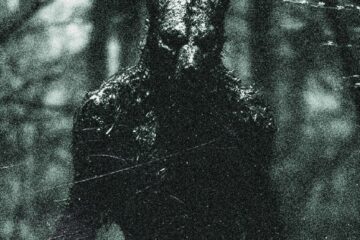In Arabic mythology as well as European folklore there’s an evil creature that lurks in graveyards and uninhabited places where there’s plenty of corpses around; the ghoul. In Arabian folklore, a ghoul is a shapeshifting demon that roams the desert and likes to take on the form of a hyena. It hunts victims by trying to trick them into going into the desert to get lost. But it also tries to lure victims into ruins or other abandoned places, where it will brutally murder its victim then make a meal of the still-warm corpse. These Arabic ghouls favorite food of choice happens to be children, but they’ll eat whomever they can find if they get hungry enough.

The flesh of the dead is what a ghoul desires, but the flesh of the living will always do as well
The Arabian ghoul steals money for some reason even though it has no way to spend it, and will hoard the loot in secret locations. This has lead to many greedy treasure hunters perishing at the hands of a hungry ghoul. The monster greatly enjoys drinking blood. And just like the European ghoul, the Arabian ghoul eats the dead. However, eating human flesh grants the Arabic ghoul the supernatural ability to shapeshift into the last person its fed upon. Which it then may use to lure in its next victim by tricking someone that person knew in life out into a desolate area. In the Arab language, the word ghoul is also an insult towards people who are gluttonous and greedy.
The version of the ghoul in European folklore is mainly an undead cannibalistic monster that lacks demonic supernatural powers like its Arabian counterpart. Similar to a Wendigo, one of the main ways a person can turn into a ghoul upon death is if they ate the flesh of another human being while they were still alive. However, ghouls could also be created through witchcraft, necromancy, or other supernatural means. Including being cursed by the Devil, or powerful demons.

Such mindless evil this monster commits
European ghouls have immense strength, with muscles seemingly made of stone. They can shrug off most attacks like they’re nothing, and regenerate even from the most grievous wounds. There aren’t too many efficient ways to fight a ghoul, so the best bet is tricking one rather than fighting it. They can be lured into traps pretty easily. Though they can be defeated head-on. Immolation will slay the monster, or other occult means beyond the abilities of any common person. They also require human flesh to survive, so sealing off a crypt where a ghoul resides is another way of killing it because it will die from starvation.
Just like the Arabian ghoul, the European ghoul also favors eating children and will attempt to lure them near crypts or graveyards. Only coming out from their hiding spots at night, they have no hesitation in eating living or dead flesh. So smart ghouls usually stick to feeding off corpses to avoid detection. However, these creatures usually lack intelligence and can’t keep their murderous urges at bay for long. Ghouls don’t show any fear of humans. Though they will flee from the sound of church bells or fire but are otherwise undaunted and bold in nature.
Ghouls may have been an undead menace to old European countries and ancient Arabia, but sightings of the monsters have actually been reported all throughout history even up to modern times. The last documented sighting being as recent as 2003. So if you see something creeping around a graveyard at night, best to steer clear.

Don’t go hanging around graveyards




1 Comment
WWW.XMC.PL · February 2, 2021 at 11:36 pm
Hi – in actuality great site you have created. I enjoyed reading this posting. I did want to publish a remark to tell you that the design of this content is very aesthetically delightful. I used to be a graphic designer, now I am a copy editor. I have always enjoyed functioning with information processing systems and am trying to learn code in my free time.